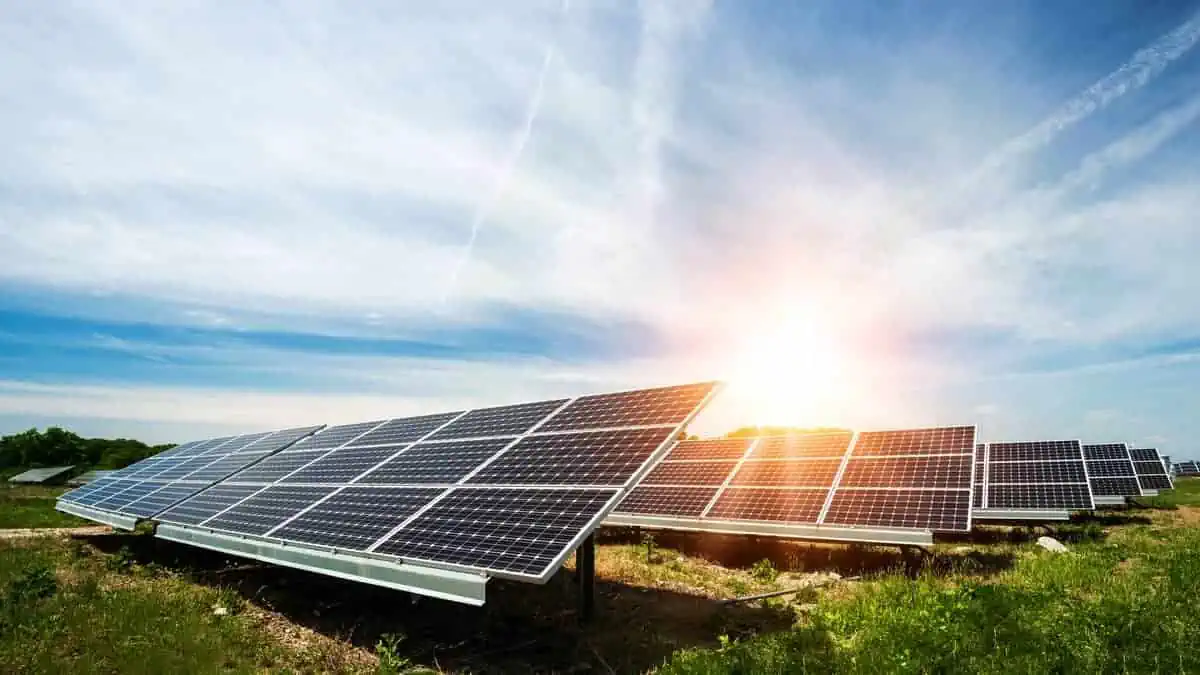According to Rethink Energy’s Andries Wantenaar, roughly 330 GW of solar modules will be manufactured globally by 2022.
Wantenaar anticipates that these modules will be placed predominantly in 2023, with global solar installation growth of 330 GW or more expected this year.
A Trendforce estimate states, “351 GW will be installed worldwide in 2023, with a 53.4% growth rate.”
Solar polysilicon
Prices for solar polysilicon have plummeted in recent years, then risen as supply couldn’t keep up with demand, and now appear to be falling again as production capacity is added.
Since 2022, the price of polysilicon has halved, indicating the expected catchup of supply to demand. But then the price leaped back up by 50%, so to 75% of the peak 2022 price, volatility partly caused by China’s Spring Festival. We expect the price to fall once more from March through to October. Still, this resurgence indicated that demand is not overawed even when monthly production of polysilicon is enough to serve 45 GW a month
Andries Wantenaar stated on solar polysilicon
Despite the instability of polysilicon costs, China’s solar module output is rapidly rising.
According to Rethink Energy, China will manufacture between 432 and 540 GW solar panels in 2023.
So 330 GW will be built this year and 540 GW manufactured, to be deployed in 2024 — a second concurrent 50%+ annual growth figure. Then — what about the manufacturing figure for 2024, which is also the deployment figure for 2025 — can it reach 700 GW?
Andries Wantenaar stated on China’s solar module output
Tindo Solar
Tindo Solar, established in 2011 by Adrian Ferraretto, is Australia’s sole manufacturer of solar panels.
Tindo derives his name from the Kaurna Native word for “sun.” Its Adelaide-based manufacturing factory produces approximately 60 Megawatts every year.
Tindo Solar is responsible for around 1% of the rooftop solar installations in Australia.
Andries predicts a 12-month lag between production and installation. Of course, this timescale will vary depending on various circumstances, including shipping time, incentives, security issues, etc.
If, as we expect, polysilicon product capacity grows from 1.2 million tons to 2 million tons by the end of 2023, then to 2.6 million tons by the end of 2024 — then with a 90% capacity factor for output at those facilities, plus the relatively small imports from the West, that’s 2.17 million tons. At a rate of 2.6 grams per Watt, which may be an overestimate, that is enough to manufacture 834 GW
Andries Wantenaar stated on solar polysilicon
Polysilicon is the most challenging component in the supply chain to develop. It took 24 months for the price to reach $40 per kilogram, then decreased to 18 months. Manufacturing lines for other solar module components can be developed in 9 months.
Even if other challenges interfere with manufacturing, China should be able to generate 750 GW of solar panels by 2024. What is created in 2024 should be put in place in 2025.
The limiting factors that define the maximum possible scale of solar installations are profitability, workforce, and grid connection, with a fourth limit being accompanying energy storage. Land availability exists, but rooftop availability is not yet a limiting factor at the national level, except perhaps in Singapore
Andries Wantenaar stated on solar installations
Over the next 24 months, module supply will not be a constraint. In the utility-scale solar sector, grid connection may be a limiting factor.
Australia is coping with this after a decade of neglect by a federal administration that denies climate change and opposes renewable Energy. Nonetheless, he is working hard to open the floodgates between states.
Vietnam’s rapid expansion
Rethink Energy provides the example of Vietnam’s rapid expansion of solar power and its effect on the grid:
Vietnam in 2020 provided a fun experimental view of what happens when a country crams as much solar as possible onto its grid. The country installed 5 GW one year and then 15 GW the next and ended up with around 5% curtailment, much higher for certain locales and projects. So 20 GW was how much it could suddenly add…
Rethink Energy stated on Vietnam’s rapid expansion
Curtailment has also been an issue in Australia, as South Australia (home of the Tesla Large Battery) generates more Energy than it needs, and the transmission lines to Victoria can’t control the increased load from solar installations.
Vietnam’s population is 100 million, and its GDP per capita (PPP) was $12,200 in 2021, while the global average was $18,600. Per capita, electricity consumption is one-third of the global average, but the rate of growth is four times the global average. So Vietnam should rate above its population for capacity additions — so let’s multiply by 40, not by the 80 suggested to get from the Vietnamese population to the global population. If Vietnam can suddenly install 20 GW, the world can suddenly install — 800 GW. And even Vietnam, with a brief ludicrous subsidy of $93.5 per MWh, didn’t cram it quite into a single year,
In a 600 GW+ global annual installation scenario, China can install its customary one-third share — its grid, with around $80 billion invested a year, can handle 200 GW of solar. But other markets, especially the EU and US, will soon hit the buffers on their grids. Some have already, such as the Netherlands. Large-scale transmission upgrades … one in Australia’s Victoria state, the other in New York State in the US — take years to complete and represent a much longer delay than the polysilicon bottleneck will prove to have been. Which is another reason the market will swing towards distributed solar
Rethink Energy stated on Vietnam’s rapid expansion






